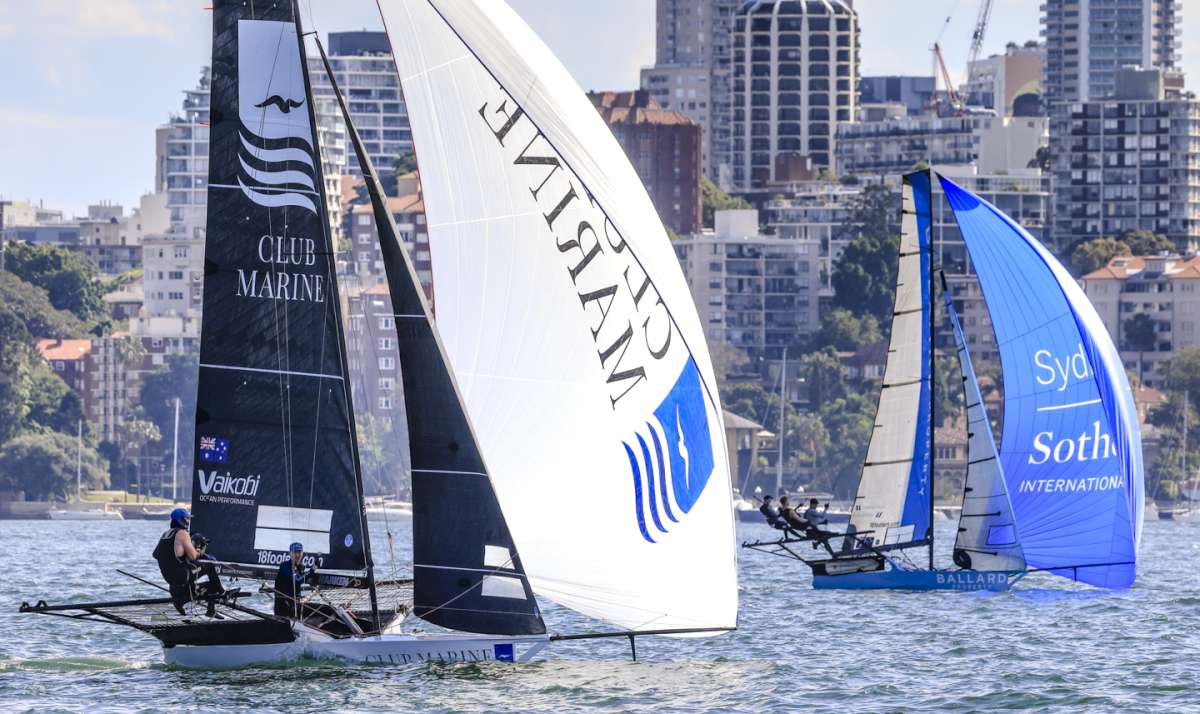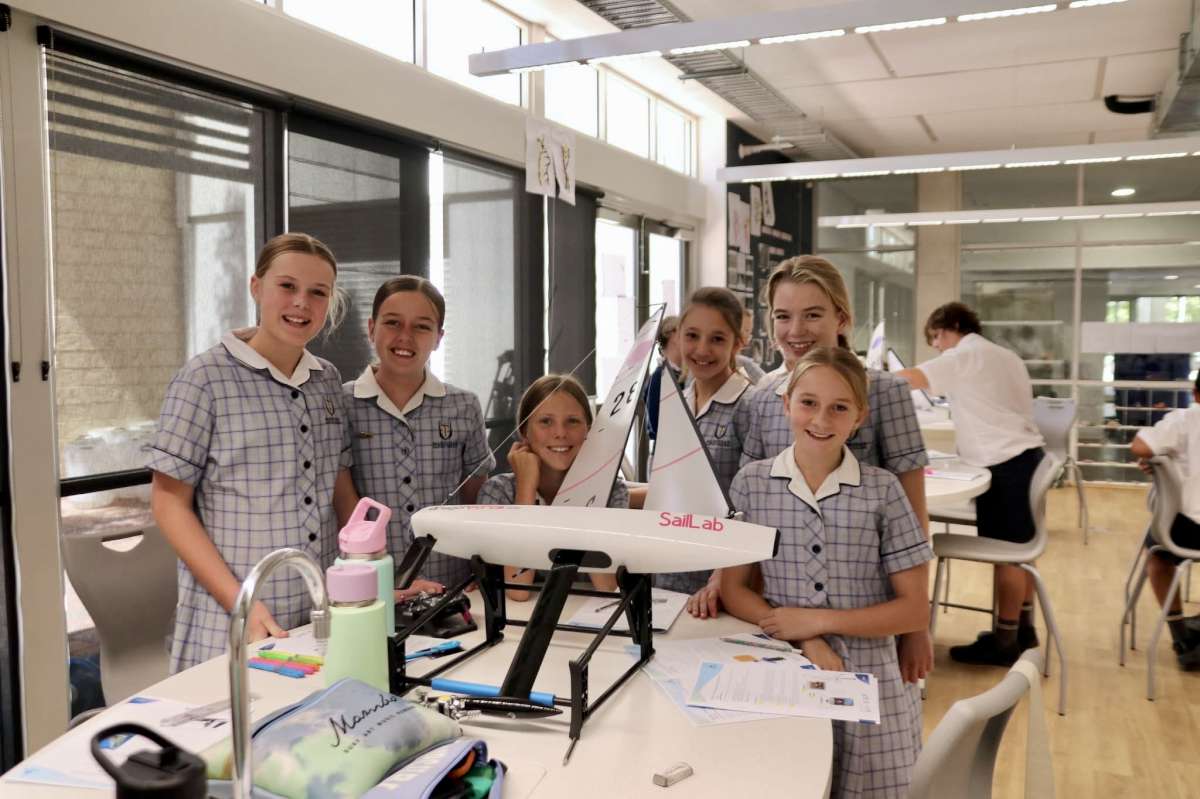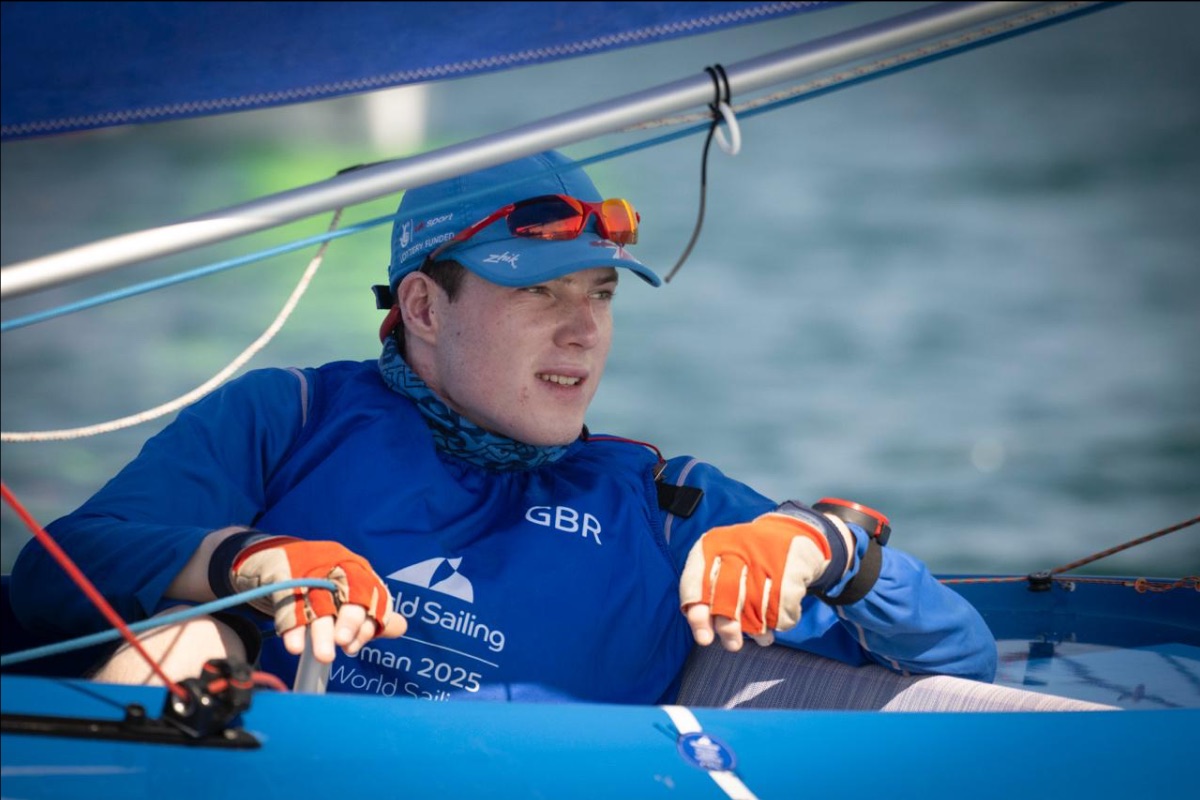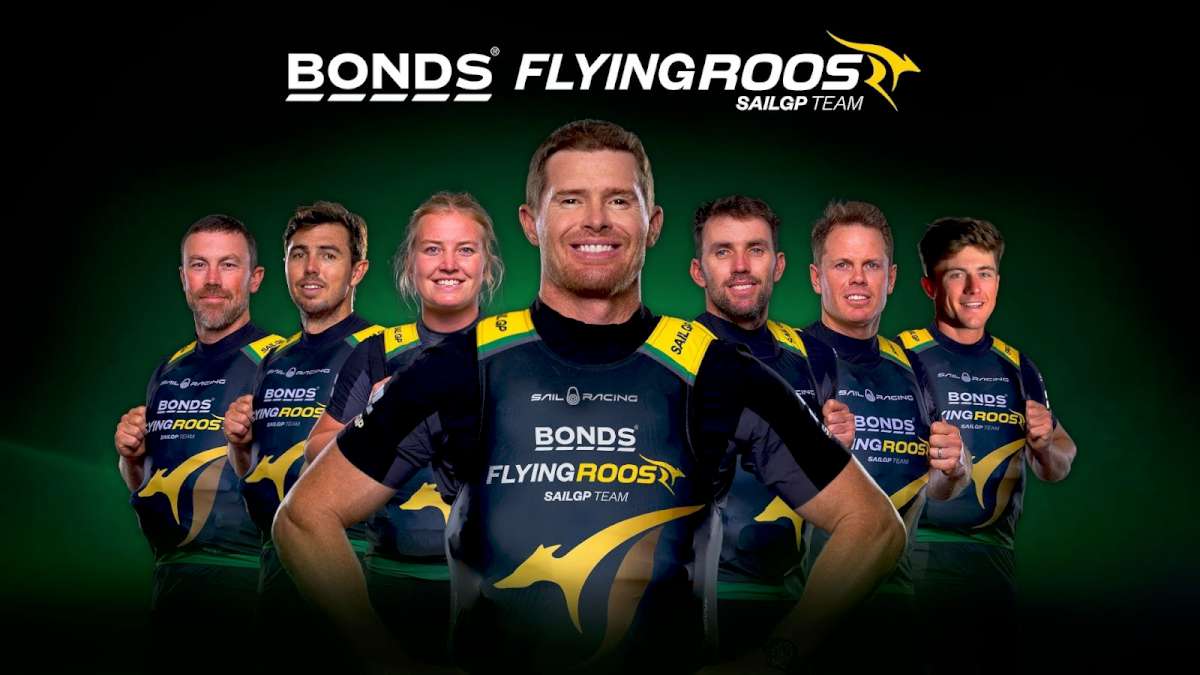The last few days have been a blur. Sitting on the tarmac in Sydney I close my eyes and take a deep breath. Yesterday, later than planned due to weather, I sailed back into Mooloolaba after three months cruising the Queensland coast with my partner and fourteen year old son, on our own boat, AnotherAngel.
Soon I will be in the air, on my way to Surunda Bay, Espiritu Santo, Vanuatu. I am joining skipper Paul Dow to undertake my
first bluewater crossing, crewing on his boat Skellum from Vanuatu to Bundaberg via Huon and Chesterfield Reefs.
A completely impulsive decision led me to this moment. Now, as the plane begins to taxi, a small knot of doubt sits like a hot coal in my stomach.
Blue water virgin
The sum total of my sailing experience, before my partner and I bought our first boat in December last year, was: learning to sail as a teenager; living with my family on a 48 foot catamaran for four years, 30 years ago; and a few weeks in coastal waters on my father’s catamaran in 2016 when we were seriously considering this lifestyle.
My partner Steve has never sailed before, so I skipper our boat and he crews and we learn together. Our dream is to sail around the world, but I have never been offshore.
When a post recently appeared in a Facebook sailing forum (WWSA) asking for crew to help bring Skellum, a 46ft aluminium catamaran, home to Bundaberg from Vanuatu, it felt like opportunity knocking and I impulsively decided to reply: “yes!”
Putting my dreams to the test, I needed to get out there. I wanted to see if I could really cut it on the open ocean. Now I am hoping I have not bitten off more than I can chew.
My first challenge
Landing in Luganville on sunset, it feels like a long way from home. The skipper’s brother Nik will arrive in a few days to complete our crew but I have come early to help Paul provision and get to know the boat before the crossing.
Collecting my backpack, I head outside looking for Greg the driver that Paul organised to collect me and bring me to the beach at Surunda Bay. Thirty minutes later it is dark. The airport is emptying and there is no sign of Greg.
The airport is set to close with no planes due until tomorrow. A little voice in my head is wondering what am I doing here, but I ignore it and jump into a local taxi. I say a small prayer that the right place on the beach at Surandu Bay will not be too hard to find on my own.
My driver Opat is entertaining on the fifteen minute drive out to Surunda, but he has no clue about where the boats normally anchor. We try a few dusty driveways in the dark without success. Finally we find one that takes us to the edge of the sand. I cross my fingers that I am in the right place and Paul is still waiting for me.
Opat stops on the grass at the top of the beach, shining headlights out towards the boats anchored in the lagoon. In the moonlight I see a boat that looks a lot like the photos of Skellum, or is that wishful thinking?
“I think that’s it!” I tell Opat. He looks at me doubtfully. I cannot say I blame him.
Dimming the headlights we see the answering flash of a torch. A few moments later a bobbing light is approaching. We found him!
Relieved greetings all around, I grab my bags, wave goodbye to Opat and, within moments under the light of an almost full moon, I am aboard. Relief washes over me. We haven’t even got near the open ocean yet.
With a cloud of long white hair surfer style and a welcome hug, Paul makes me feel immediately comfortable. He was worried about me when I did not turn up.
He and Sjany, his partner of 38 years, have been sailing Skellum for eleven years, circumnavigating Australia. He regales me with tales of sailing in north-western Australia, the Gulf of Carpentaria and the west coast of Tasmania; all of which are on my own sailing bucket-list.
Still a yes
My first chance to see how Skellum sails and how my skipper likes to operate, arrives the following day. We are moving the boat down to Luganville where we can provision, collect Nik and clear customs and immigration.
A light breeze across the aqua-blue waters of Surunda Bay does not hint at the 25 knot SE wind and three metre swell we hit as soon as we nose out into the channel. It is the biggest swell and strongest wind I have ever punched into.
As a coastal cruiser, I would not dream of heading out into conditions like this, but I steel myself for a ‘baptism by fire’ and throw myself into my ‘crewie’ role. A three mile punch takes us directly south-east down the side of Santo, before rounding the reef and reaching along its wild coastline.
Paul seems pretty pleased with me on arrival into Luganville; it feels like I have passed a test.
As a shakedown sail goes, it could not have been much better: a reef lagoon exit; big seas; a good stiff wind and an opportunity to put the canvas up. It has given me a good sense of the boat, plus the skipper, I am about to cross an ocean with.
With the anchor down and some lunch on the table, he has an important question for me, “so, are you still keen to do the crossing,” he asks. I laugh.
“Yes, the answer is still yes!” I replied. He would have to work harder if he was trying to get rid of me.
Luganville
The Beachfront Resort, Luganville sits on the waterfront about one kilometre to the west of the town’s main street. A lee shore can make landing a dinghy tricky, with a small wave often present, but the resort welcomes yachties.
It is walking distance to town and provides a fresh water tap close to shore for filling water containers, which we do during the afternoon.
They have hot water shower facilities for sailors at a small fee and free access to guest wifi, bar, restaurant, pool and 240 volt power outlets conveniently positioned around the inviting seating area. The breeze wafts across the tables from the grassy foreshore making it the perfect spot for a cooling afternoon sundowner.
Rainfall has been sparse and there are concerns about water availability in some parts of Vanuatu. On nearby Ambae Island, a volcano has been erupting and the 6000 residents have been temporarily evacuated to Santo increasing the pressure on resources, but the locals are welcoming and warm.
The weather still looks good for departure tomorrow. Heading into the local market the main street is dusty as locals and visitors come and go. The produce market is full of fresh fruit and vegetables and the butcher’s display is laden with good quality Santo beef. We stock up, provisioning for ten days.
Departure day
The following day, we gather our paperwork and passports and head into the customs office early. We are expecting it to take several hours and have planned for a 2pm departure, but our paperwork is completed by 10am.
We head west along Luganville’s main street, stopping to enjoy a final latte and grabbing a few last provisions, before launching into what is, for me at least, the big blue unknown.
Back onboard we do a final weather check and look over our course on the navigation system. We have already logged on with Gulf Harbour Radio early this morning. This HF station, operated by a NZ-based couple, run a daily schedule and specific daily location-based weather updates for boats in transit or preparing to transit between the South Pacific, NZ and Australia.
Just after noon, the chain begins to rattle in over the gypsy. I down a couple of ginger tablets. It is a precaution, I do not usually get seasick but I don’t know how I will go on the open ocean.
As the anchor comes up, we swing into the wind and hoist the sails.
Open ocean
The dark blue water of the Segond Passage is dusted with white frothy chop; tidal rapids driven by wind against tide. As Nik fiddles with the headsail, gusts funnel over the hills of Santo and Aore islands.
The skipper has the wind in his hair and a gleam in his eye. I am soaking it in, excited and nervous and happy.
Twenty knot south-easterly trade winds and 2m swell are forecast for the first few days. It will be a quick run.
Our plan is to stop at Huon Reef, approximately 280 nautical miles away, 100 miles off the north-western end of New Caledonia. Then head to Chesterfield Reef, around the same distance again. From Chesterfields, it is a solid three day sail into Bundaberg.
Clearing the island of Aore we turn south-west, the open ocean stretching away to port. The sky is a patchwork of white clouds, a smudge of rain on the horizon. Approaching the south-eastern end of Santo Island, the wind settles in at 20 knots. The troughs lengthen, the rise and fall becoming more predictable.
I have the early evening shift until 10pm, handing off to Nik. Then I will relieve the skipper before first light for the dawn shift. My first sunrise on the open ocean.
A double reefed main and no headsail
As the sun heads for the horizon, the wind rises further. We put the second reef in the main.
Santo drops away into the haze behind us and the ocean morphs from deep blue to indigo, purple and violet beneath us. The wave tops are tipped in orange and pinks highlights. Sitting in the breeze, I feel good.
As full darkness closes in around the boat, I am not quite as comfortable. The movement and darkness is becoming disorienting. I have done very little night sailing and what I have done coastally has generally been under a clear sky and a full moon. This is dark. No sky is discernible behind the clouds and the horizon
is non-existent.
The occasional white splash of foam cresting on the wave top glows under the steaming light as they roll towards us higher than the solar panels and above head height. The wind is really blowing now and we are sitting around 7kn with a double-reefed main and no headsail.
I am not scared, but a little voice in my head wonders if maybe I should be. My stomach is rolling uncomfortably. I work hard to hold it together through dinner but, not long after the boys have headed below to sleep, I realise I’m quickly losing the battle.
Not much of a bluewater sailor
It is too rough to hang my head over the side in the dark and risk falling overboard, even with my harness on.
My mouth is filling rapidly with saliva when I finally spy a bucket in the aft hatch behind me. I dive for it just in time for dinner to make a return.
Ginger tablets forgotten, I head below to grab the Travelcalm instead. They make me drowsy but, in the interests of not vomiting again, I no longer care.
Waking Nik at the end of my watch, my mouth still sour, I slink down to my cabin chewing another Travelcalm. I climb into my bunk, not feeling like much of a bluewater sailor and wishing for a calm coastal anchorage for the night.
It is just before 4am when I roll out of my bunk again. The wave action seems less, or maybe that is just wishful thinking. My fingers are crossed my body has adjusted to the movement of the boat while I slept. I take over the watch.
Nestled in the helm seat, back to the wind, feeling drowsy but okay, drinking coffee and staring out at the dark water I contemplate whether this blue water sailing business is for me.
Suddenly the rubber drive belt of the autopilot snaps with a twang. Grabbing the wheel and noting the heading, I know I need to raise the skipper. I release the wheel to take the two steps across the aft deck to rap on the deck directly above his bed before diving back to the wheel and bringing her back on course, hoping it is enough to wake him.
A moment later he’s beside me. “The autopilot belt,” I say, pointing and keeping my eyes on the compass to maintain course as the heavy seas push the stern of the boat around.
“Arh.” comes the reply in the dark. He disappears below deck. I steer the boat, hoping he is coming back.
Reappearing beside me, a dark shadow in the glow of the red aft deck light, within moments he has replaced the broken belt in the dark.
His shadow gives me a thumbs up and a flash of teeth in the red light as he grins at my surprised look and disappears back below.
A calm anchorage beckons
The sky lightens behind me and the ocean changes from black, to silver grey, to a deep navy blue as the sun works through the clouded horizon for my first sunrise. I am definitely feeling better than the previous night.
I am worried food will not stay put but, weighing that up against not eating until we reach Australia, I decide I’m going to have to risk it. Breakfast goes down and stays down.
At 8am it is only 110nm to Huon Reef – we’ve covered over 170nm in just under 20 hours. On our schedule call, Gulf Harbour Radio let us know we may be in for even stronger winds later in the day; we leave the double reef in.
I am doing the mental calculations of how much further to Huon and an anchorage, when Paul delivers the crushing news. Huon may not be an option in these conditions, it is just too rough. The skipper decides to shift our course north towards Chesterfield Reef, run out the headsail and bypass Huon. I draw on my mental reserves to adjust to another few days of being at sea.
Later, a vessel appears on AIS. A monohull called Bounty,they are doing 5kn. We soon catch up to them.
Their skipper gives us a call. They are heading into Huon Reef and have dropped their main, running with a small headsail only to time their arrival to the reef with good daylight tomorrow.
As part of D’Entrecasteaux Barrier Reefs to the north-west of New Caledonia, permission is required from the French Department of Environment to stop here. With a total area of less than one square nautical mile, Huon comprises four islets: Huon, Leleizour, Fabre and Surprise; each about 1km in diameter.
The skipper from Bounty tells us anchorage here is okay in the current conditions, but with the decision already made to by-pass the skipper is keen to press on. I am disappointed to be missing out on this unspoilt, remote reef on this trip, but mostly I’m disappointed about no longer having a calm anchorage for a night or two to look forward to imminently.
By the time I roll out of my bunk at 3.45am the next morning, we are 60 nautical miles past Huon.
Fresh bread and a shower
Skellum has a watermaker onboard, but water can only be made when at anchor. With three on board, showering is being limited to every second day while we are on passage.
Taking a shower while underway is a new experience. Turning downwind to make it slightly calmer, it still requires one arm propped against the wall to stay upright. But the hot water is worth it and I feel almost human again.
At current speed we will reach Chesterfield Reef by lunchtime tomorrow. This thought buoys me up considerably. However, by lunchtime the wind has eased to 15kn and our ETA starts to climb.
We shake out both reefs and watch the 3m swell subside down to around 1.5m to 2m through the afternoon. The easing conditions are welcome.
Nik heads to the galley to whip up a loaf of fresh bread, but the easing winds poses a new problem. Our slowing speed means we may not arrive at Chesterfield until after dark. Paul is wavering on whether to stop or keep going. We could slow down, like Bounty, or stand off for the night to wait for better light to enter the reef.
A distant rumble
During the afternoon we make contact with a couple of boats also doing the crossing from Luganville, but a few hours ahead of us. EasyTiger,Class7 and Bossanova are all headed to New Caledonia and Vanuatu along with Skellum on the Go East
























